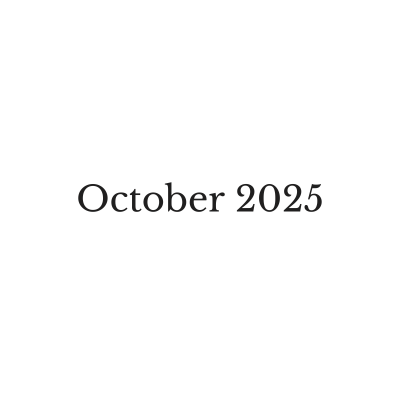Market Report May 2025
Equity Markets
The FTSE 100 rose by 3.3% in May to reach a two-month high of 8,786 points. The Spring rebound was supported by a combination of policy shifts, including a Bank of England rate cut, an upgraded UK growth forecast from the IMF, and a further sigh of relief in global trade tensions following landmark trade deals with the G3 and a U.S. decision to postpone 50% tariffs on EU imports until July.
U.S. equity markets also had a strong showing in May, with the S&P 500 Index climbing 5.5% to log its best monthly performance since November 2023 as the market recovered from its largest monthly decline since COVID following April’s tariff debacle. With the 90-day hold on trade levies set to expire on July 8th, failure by the Trump administration to secure trade deals in the coming weeks with its allies may re-open the proverbial economic blackhole.
UK/US ‘Trade Deal’
On May 8th, the UK and U.S. reached a limited but impactful “Economic Prosperity Deal” aimed at easing tariff burdens and promoting bilateral trade. As part of this agreement, U.S. tariffs on UK-origin cars were reduced from 27.5% to 10% for the first 100,000 vehicles annually, a move welcomed by British car manufacturers.
Additionally, U.S. tariffs on UK-origin steel and aluminium, previously imposed under Section 232 of the Trade Expansion Act 1962, were eliminated – the implementation however is yet to be finalised, and UK government angst is growing after Trump announced at a rally on May 28th in Pennsylvania that steel and aluminium tariffs will double from 25% to 50% from June 4th.
On the agricultural front, the UK removed its 20% tariff on U.S. ethanol imports, raising concerns among domestic bioethanol producers about increased competition and potential job losses. Furthermore, the deal enhanced U.S. access to the UK agricultural market, including for beef and corn ethanol, though UK bans on hormone-treated beef and chlorine-washed chicken remain in place.
UK/EU ‘Brexit Reset’
The UK and EU concluded a comprehensive “Brexit reset” deal addressing persistent trade and cooperation challenges. Notable components of the deal include reduced border checks on British food exports to the EU – allowing items like raw burgers and sausages to re-enter the EU market – and an extension of EU fishing access to UK waters until June 2038.
In defence, a formal UK-EU pact was established, providing the UK access to the EU’s €150 billion defence loan program and fostering cooperation on sanctions and intelligence sharing. The two sides agreed to link their carbon trading systems, thereby avoiding taxes on carbon-intensive goods such as steel and cement, and British travellers will now be able to breeze through immigration as access to e-gates at European airports begins to be restored.
Reflecting the progress made in trade deals and the UK’s improved economic resilience, the IMF raised its UK 2025 growth forecast from 1.1% to 1.2% on May 27th, citing strong Q1 GDP performance and more robust economic fundamentals.
Commodities
Gold prices remained stable throughout May, trading between $3,200 and $3,440 per ounce, after peaking at an all-time high of $3,501.27 per ounce on April 22nd, its 28th record high of the year.
Brent crude prices averaged down to $64.45 per barrel in May 2025, down from $68.13 in April. Despite a brief spike following geopolitical tensions in Russia, crude prices have come under renewed pressure as OPEC+ confirmed a third consecutive 411,000 barrels per day production increase from July.
When the group announced its plan to unwind the voluntary cuts earlier this year, the agreement hinged on boosting the group’s combined production by 137,000 barrels per day each month between April 2025 and September 2026. At the current rate, OPEC+ is set to have restored all of the 2.2 million barrels per day in curbed output by September 2025, a year ahead of schedule.
Monetary Policy
The U.S. Federal Reserve kept its benchmark interest rate unchanged at 4.25-4.5% during its May meeting. Chairman Jerome Powell reaffirmed the Fed’s independence, resisting political pressure from President Trump to lower rates following the April market sell-off triggered by his global tariff onslaught.
The Bank of England reduced its central bank interest rate by 0.25 percentage points to 4.25% on May 8th. The decision passed by a narrow 5 – 4 vote, with two members advocating for a larger 0.5 percentage point cut and two preferring to hold the rate steady at 4.5%. Governor Andrew Bailey emphasised that the BoE is not on a predetermined path for further cuts, stating, “Interest rates are not on autopilot – they cannot be.”
Meanwhile, the European Central Bank (ECB) had already cut rates by 25 basis points from 2.65% to 2.40% on April 17th. Although no rate decisions were scheduled in May, markets expect another 25-basis point cut at the upcoming June 5th meeting, followed by a pause until September. The ECB remains the most aggressive among the G3 central banks in its rate-cutting cycle, with Eurozone inflation holding steady at an annualised rate of 2.2%.
Inflation Trends (April)
In the United States, inflation surprised to the downside in April. The annualised Consumer Price Index (CPI) decreased by 0.1 percentage points to 2.3%, down from 2.4% in the previous month. Core CPI rose by 0.2%, falling short of the 0.3% forecasted increase.
In the UK, inflation data released on May 21st exceeded expectations, raising concerns among Monetary Policy Committee members following the May 8th rate cut. Core CPI rose by 0.4% to 3.8%, which was 0.2 percentage points above forecasts. Similarly, annualised CPI increased by 0.9% to 3.5%, also 0.2 percentage points higher than expected.
In the Eurozone, annualised CPI remained unchanged at 2.2%, in line with expectations. Additionally, previously reported April Core CPI was revised upward from 2.4% to 2.7% and held steady at that level.
If you are interested in discussing further, please contact the desk on 0207 466 5665.





